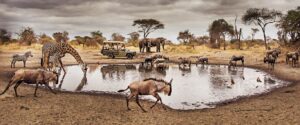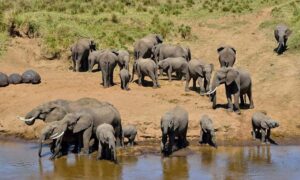Discover the Ngorongoro Conservation Area
The NCAA employs international systems to safeguard the cultural treasures and natural resources of the NCA. This approach ensures a welcoming atmosphere for domestic and foreign tourists, students, researchers, and stakeholders in tourism and environmental conservation. We have streamlined the process for visitors to enjoy a multitude of attractions and activities, making the NCA an essential stop on any Tanzanian itinerary. This destination offers more tourist attractions and exciting activities than many other well-known locations.
As the organization responsible for the preservation, protection, and development of the Ngorongoro Conservation Area, we are committed to maintaining its splendor and achieving international recognition. Our efforts have earned the NCA several international awards and recognitions, including global recognition as a Geopark. This accolade underscores the NCA as a premier vacation spot in Tanzania, promising top-tier tourism services worth every penny.
History and Significance
Originally part of Serengeti National Park, the NCA was established under the National Park Ordinance of 1948 and implemented in 1951 to preserve its natural and ecological integrity. In 1959, the area was divided into two distinct Protected Areas, each with unique values and conservation statuses.
Recognized as one of Africa’s Seven Natural Wonders, the NCA was designated a UNESCO World Heritage site in 1979. Its global importance for biodiversity conservation is highlighted by the presence of globally threatened species, dense wildlife populations, and the annual migration of wildebeest, zebras, and gazelles. The NCA also holds significant cultural value, with evidence of human evolution and human-environment dynamics spanning nearly four million years.
The NCA was initially established as a multi-land use area where wildlife coexists with the semi-nomadic Maasai residents, who move in search of water and pasture for their livestock.
Natural and Cultural Assets
The Ngorongoro Conservation Area boasts numerous natural and cultural treasures, including:
- Ngorongoro Crater: The world’s largest inactive volcanic caldera, teeming with diverse wildlife.
- Empakaai Crater: Known for its stunning lake and vibrant birdlife.
- Olmoti Crater: A less-visited gem with a beautiful waterfall.
- The Northern Highland Forest Reserve: A haven for endemic plant and animal species.
- Endoro Waterfalls: A scenic spot ideal for hiking and birdwatching.
- Endoro Elephant Caves: Historical caves carved by elephants searching for minerals.
- Olduvai Gorge: A significant archaeological site with evidence of early human evolution.
- The New Olduvai Gorge Museum: Showcasing artifacts and discoveries from the Gorge.
- Dr. Mary Leakey Living Museum: Honoring the renowned paleoanthropologist.
- Laetoli Footprints: Preserved footprints providing insight into early human life.
- Shifting Sand: A fascinating natural phenomenon of volcanic ash dunes.
- Lolmalasin Mountain: The highest point in the NCA.
- Olkarien Gorge: A seasonal home for nesting vultures.
- Nasera Rock: A prominent rock formation with historical significance.
- Ndutu Plains: Renowned for wildlife, especially during the calving season.
- Gol Mountain and Sale Plains: Stunning landscapes with rich wildlife.
Plan Your Visit
Explore the unmatched beauty and rich heritage of the Ngorongoro Conservation Area with Bush Guides Safaris. Whether you’re interested in the natural wonders or cultural history, we offer expertly guided tours to enhance your experience.
For any questions or to plan your visit, please use the contact form below or reach out to us directly at bookings@bushguidessafaris.com. Start drafting your bucket list now and get ready for an unforgettable adventure!









